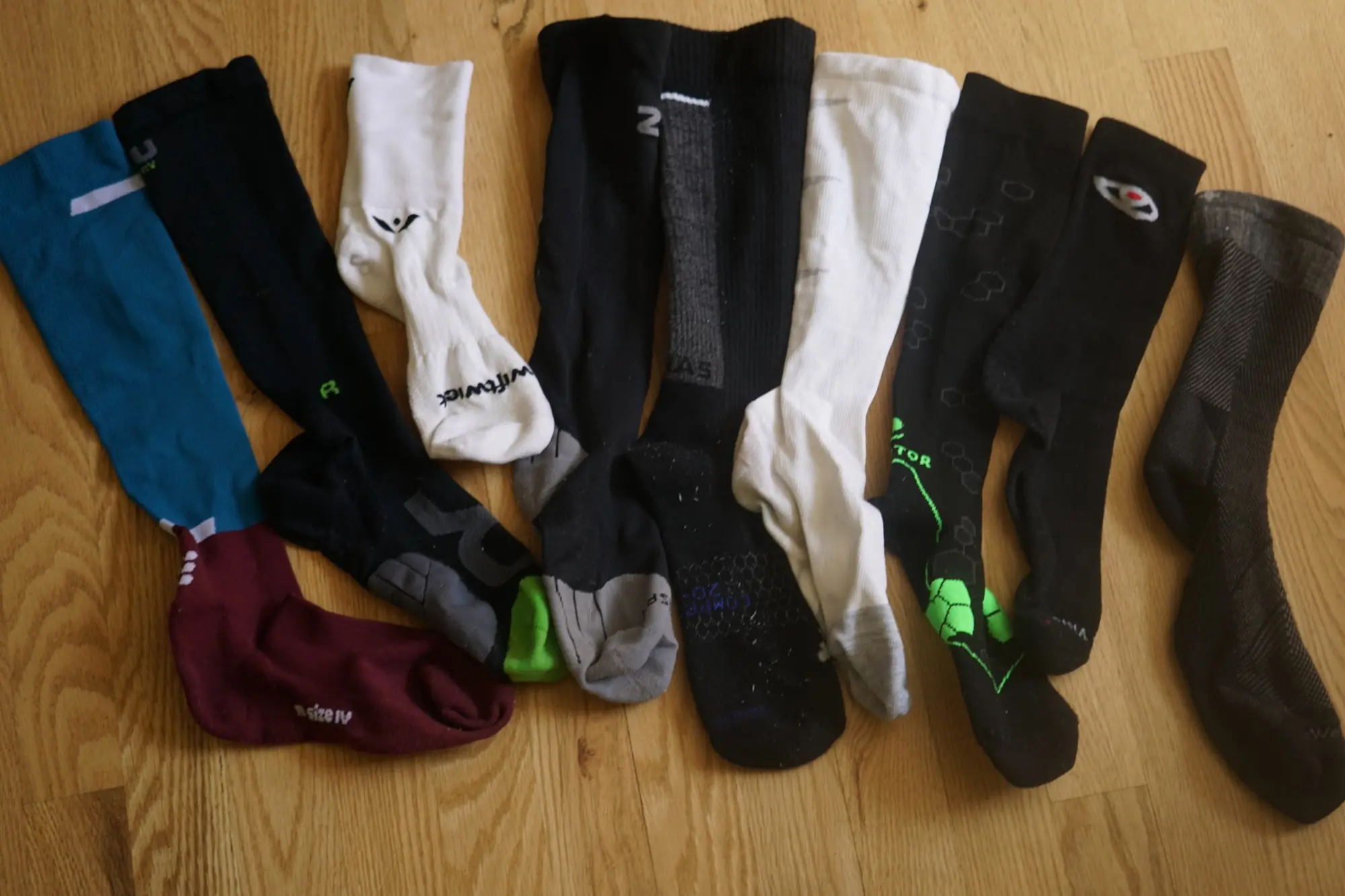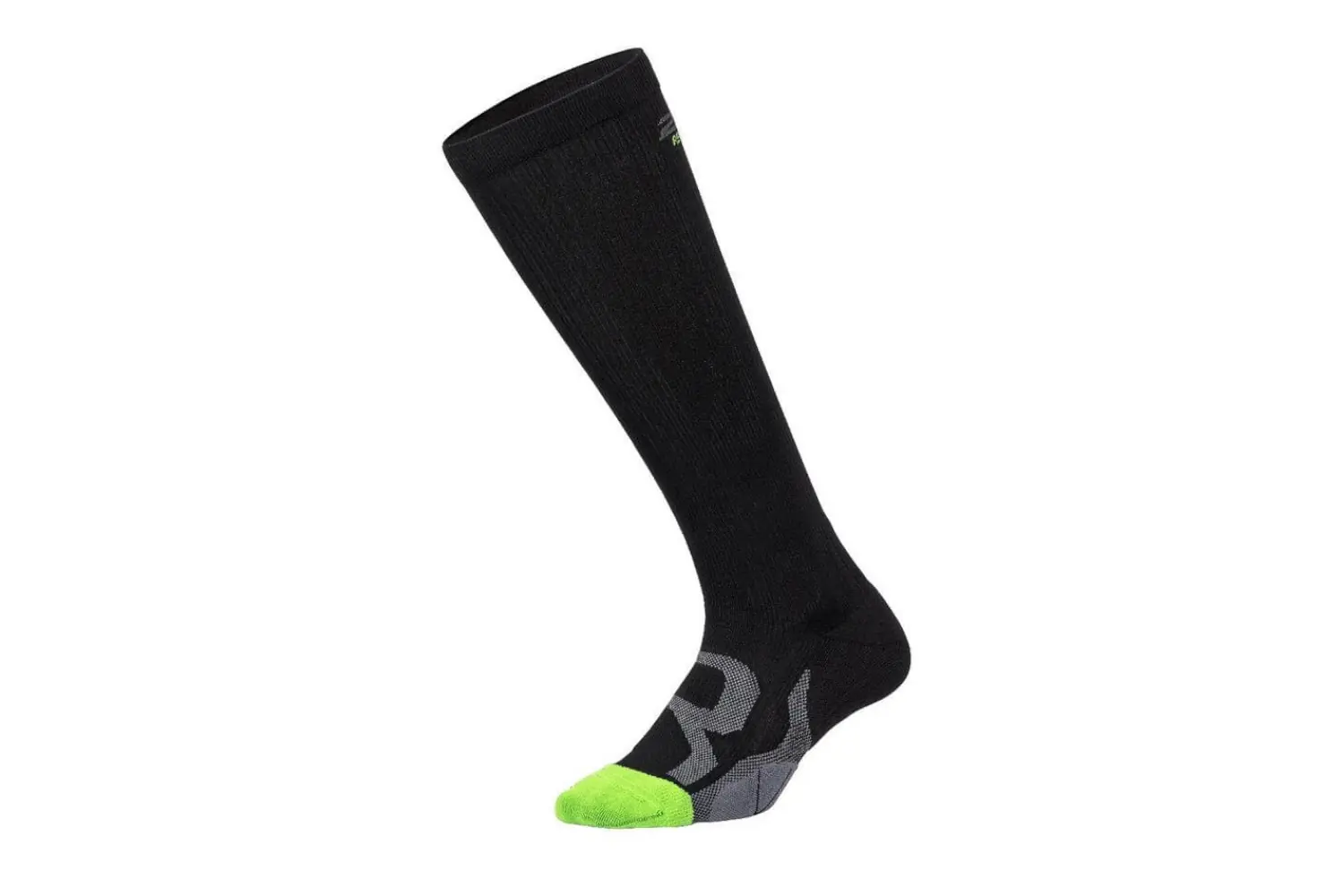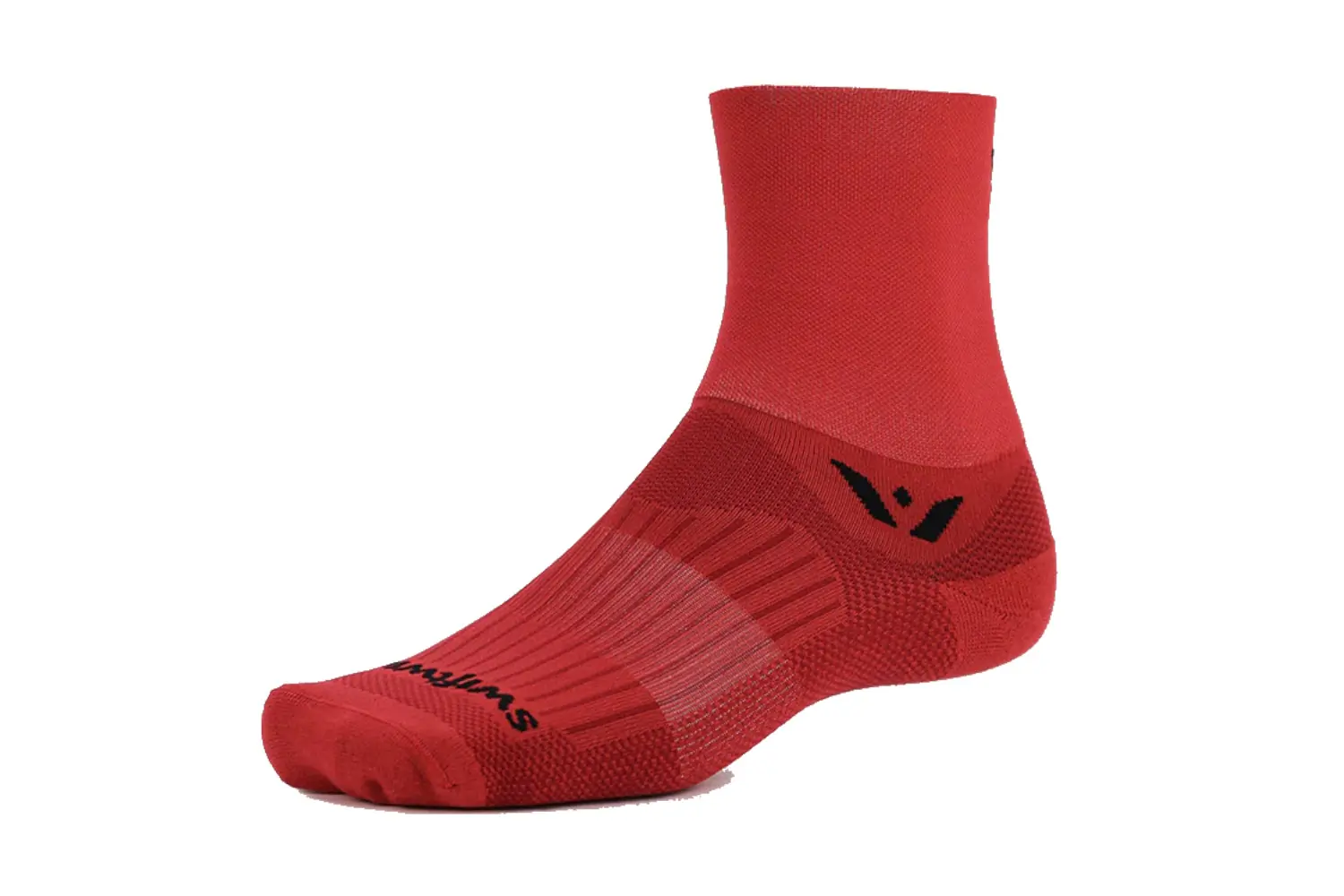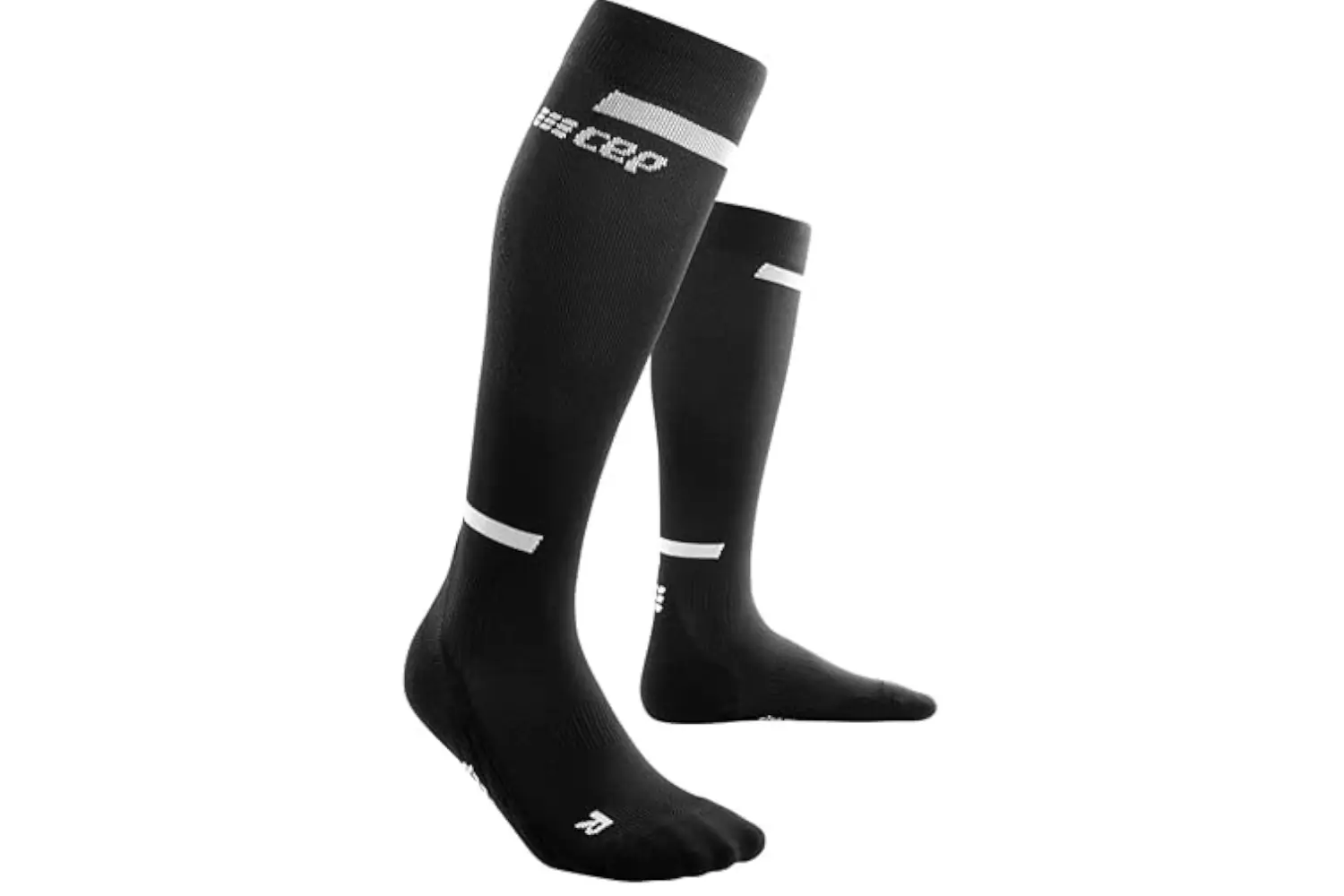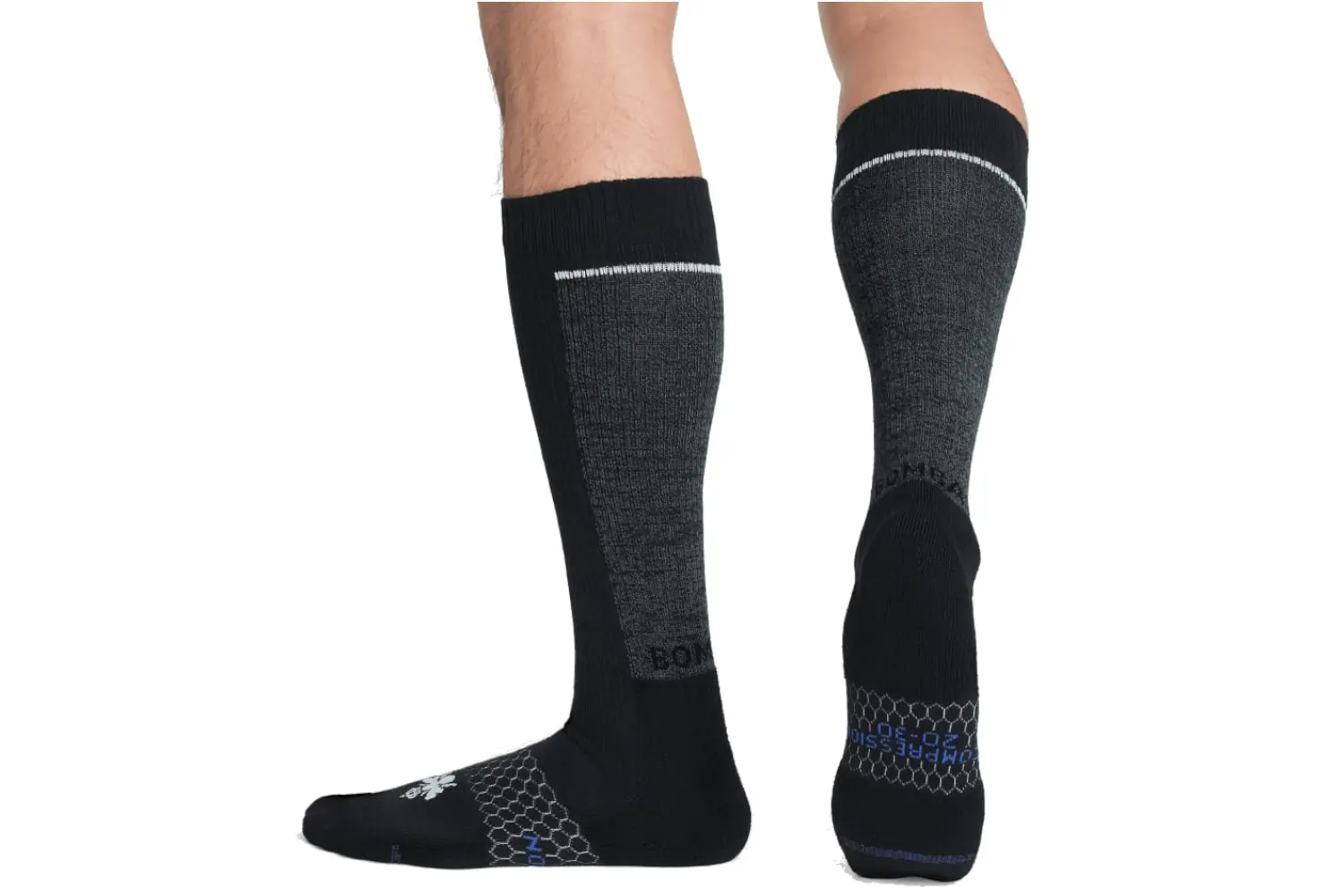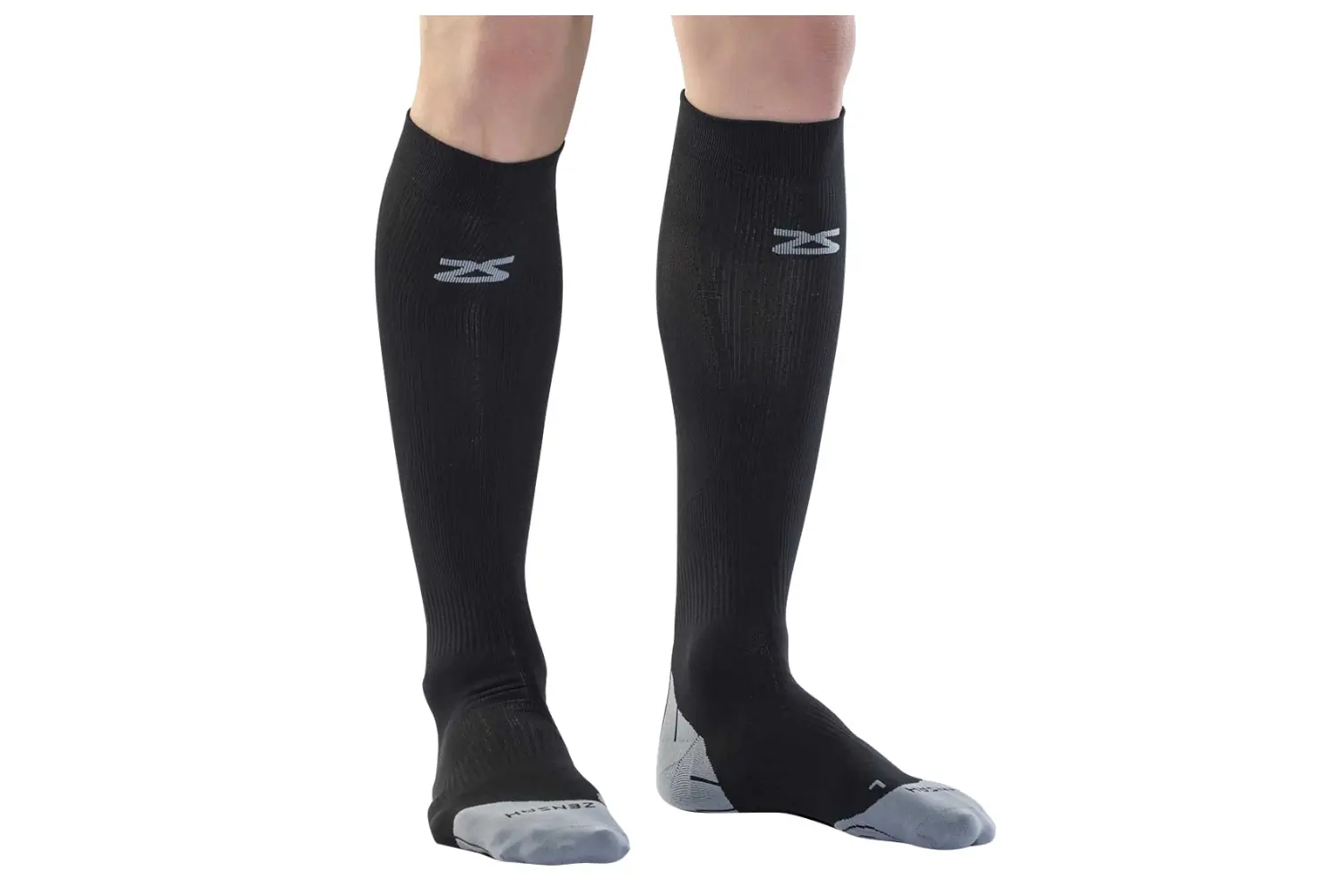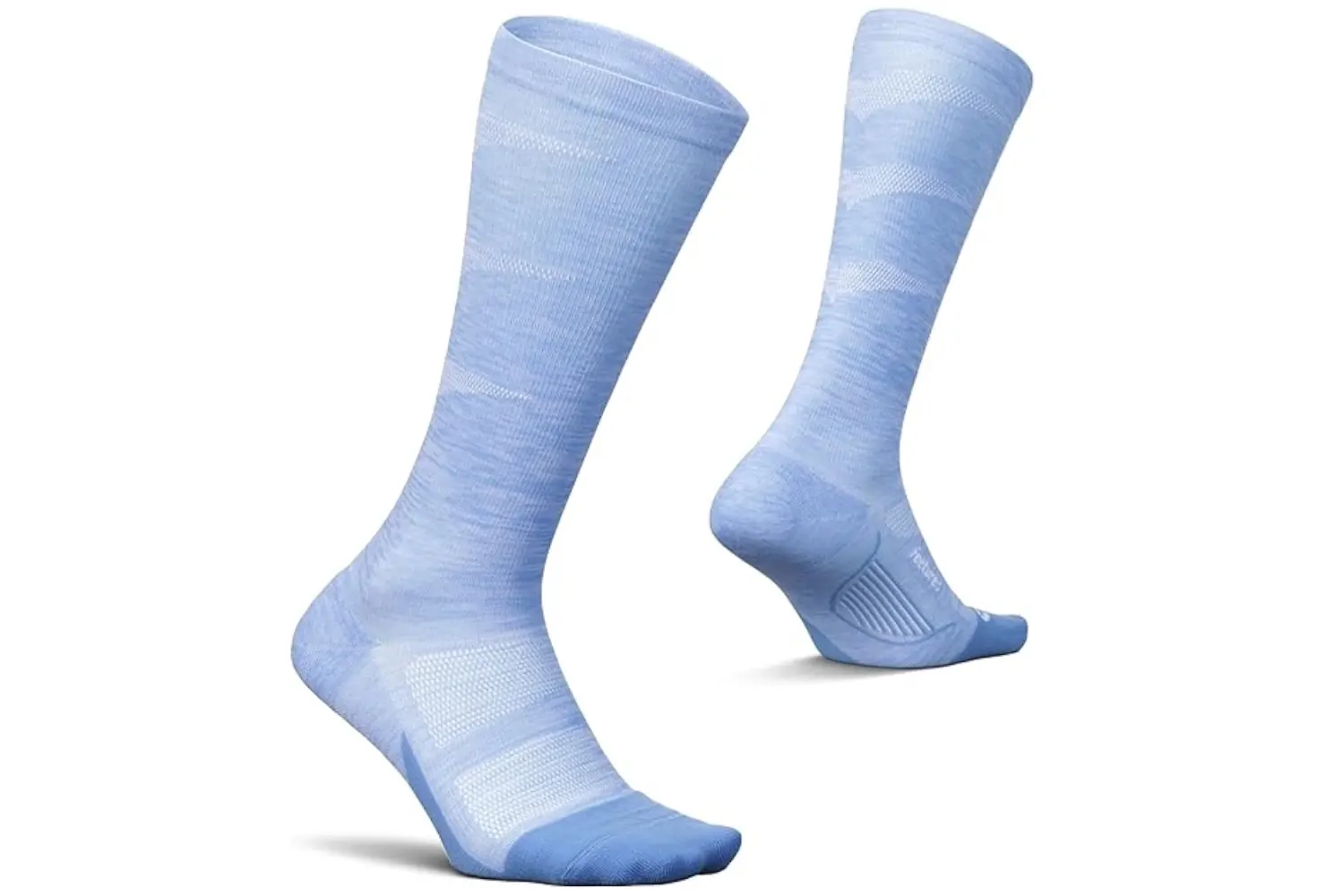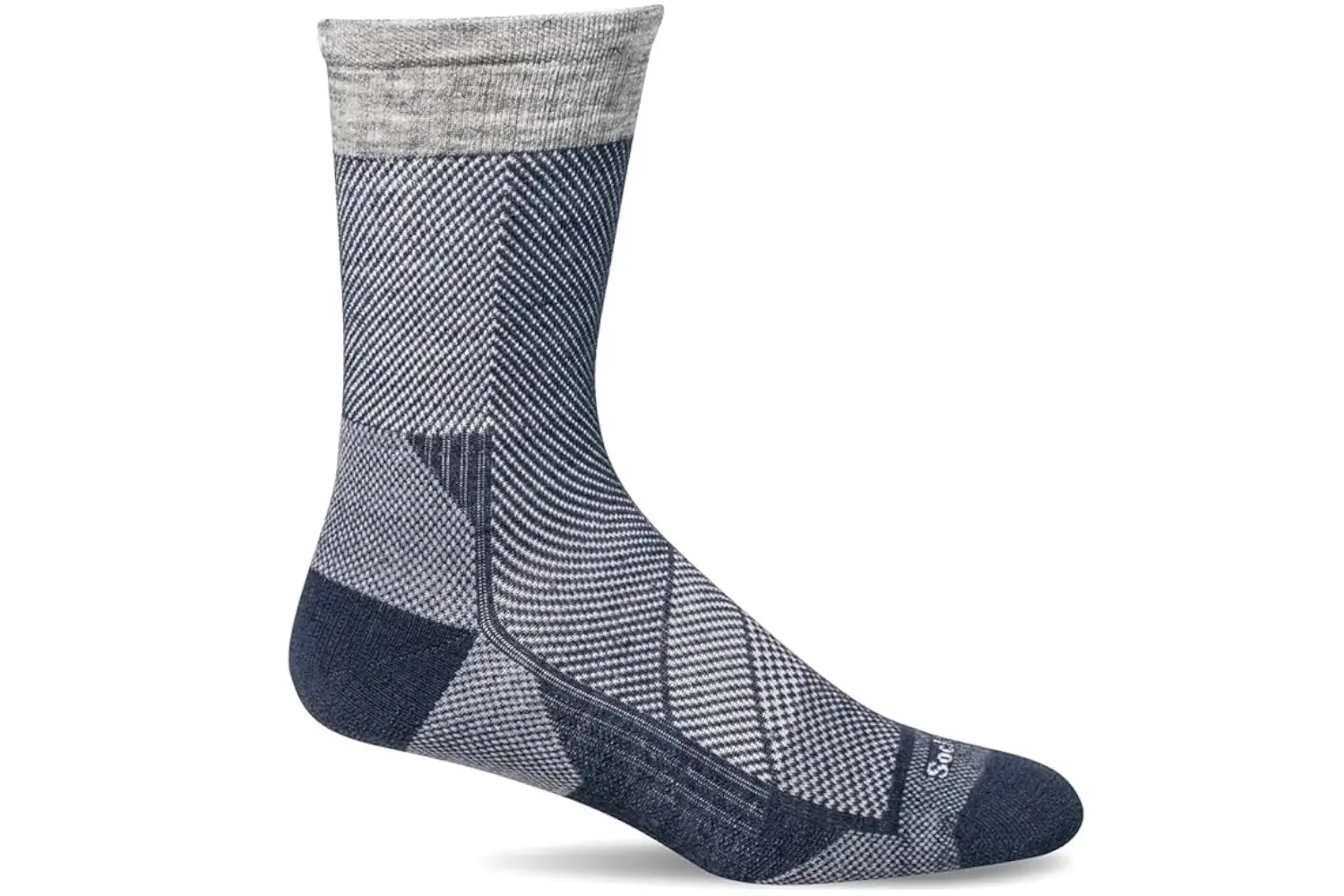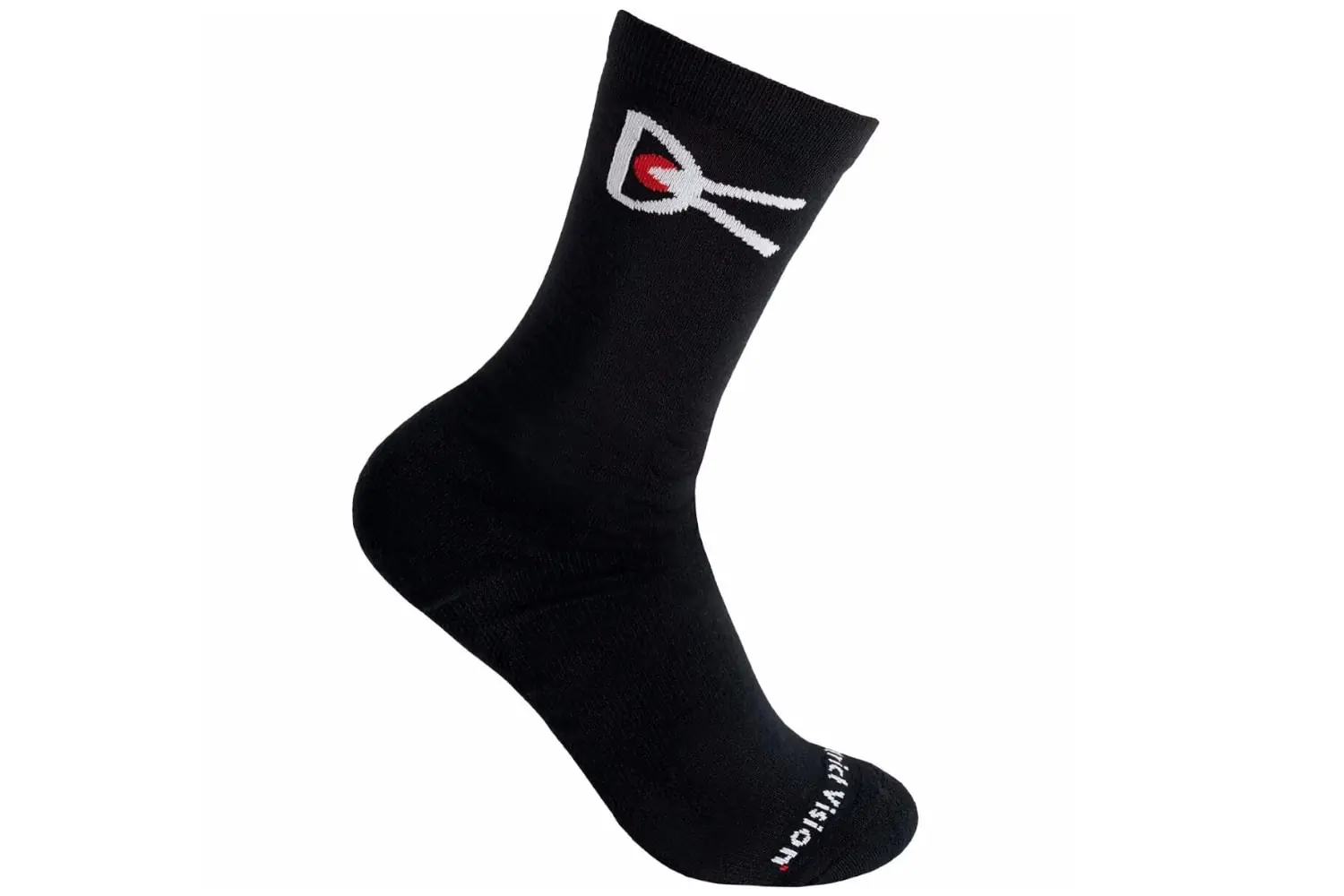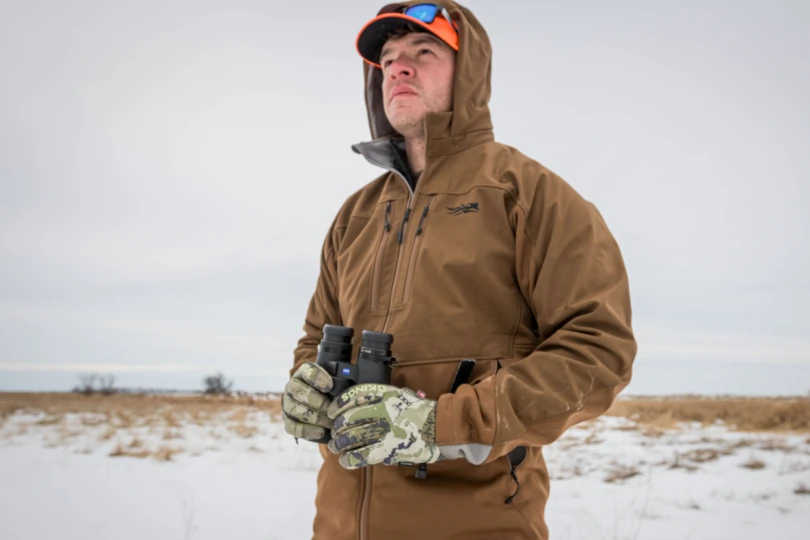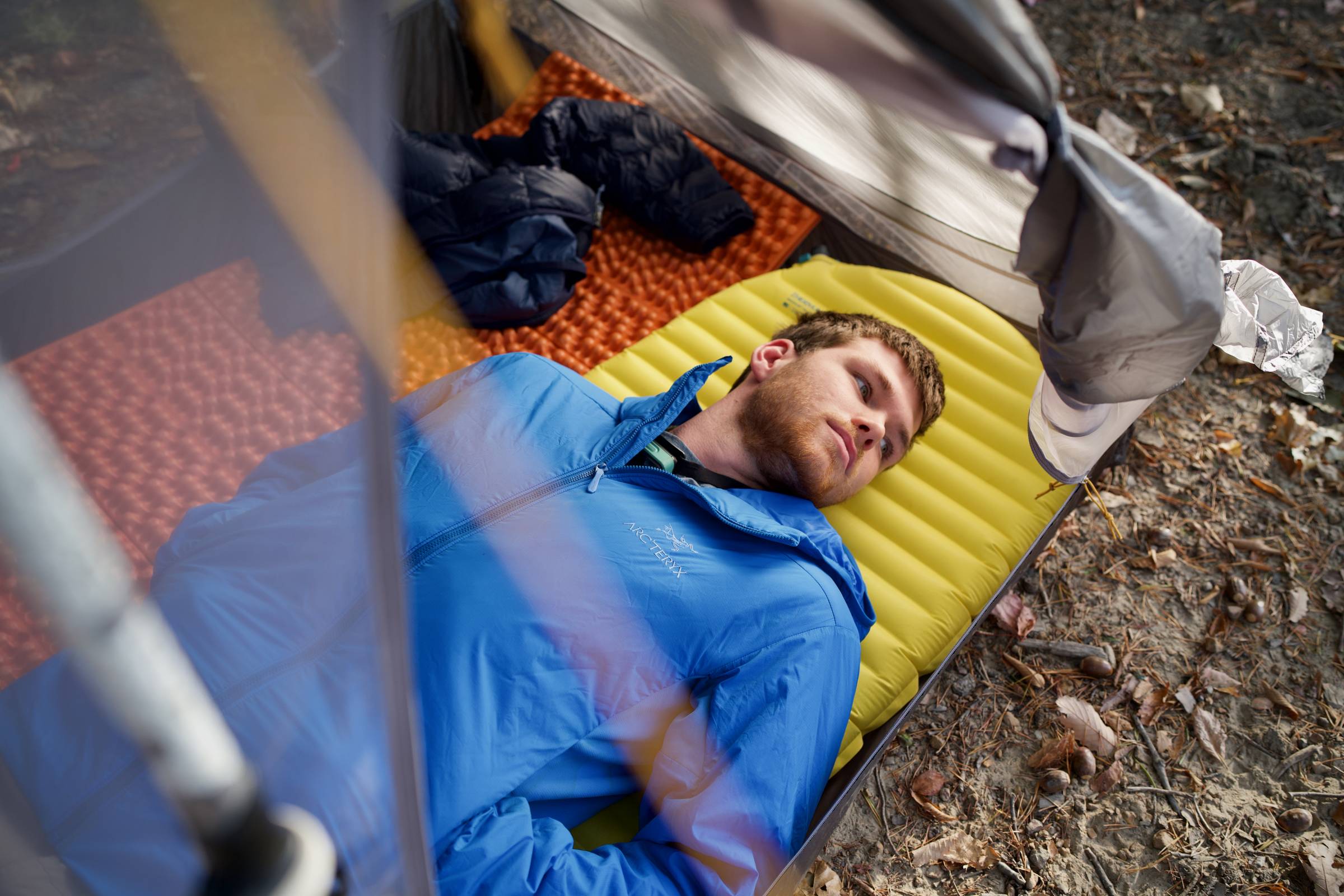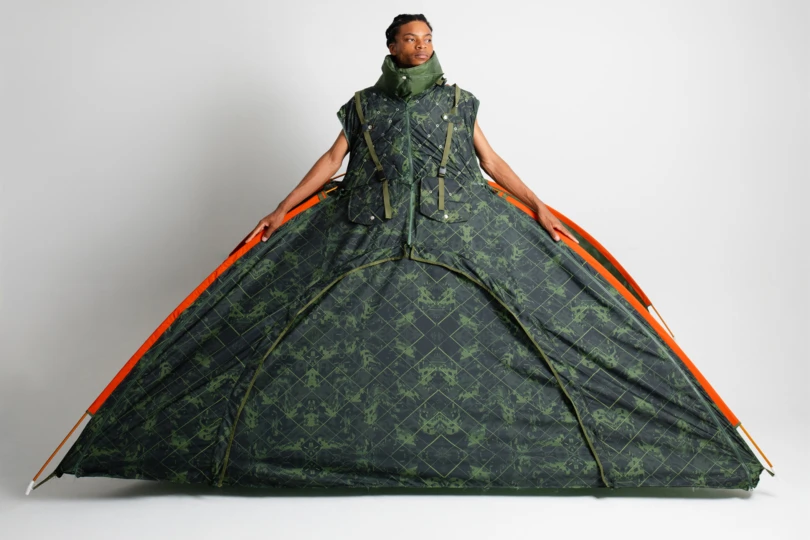When you think of compression socks, your mind probably jumps straight to that one pharmacy aisle with a weird mixture of first-aid, orthotic insoles, and bandages. The best compression socks, though, are actually a boon for runners, cyclists, and athletes of all kinds, not just nurses and folks boarding overnight flights.
Sure, you’ll find them next to the Ace bandages and Dr. Scholl’s gellies at your local Rite Aid, but those aren’t the only options. Many brands make performance and recovery-oriented socks these days, from sock specialists like Bombas or Swiftwick to compression experts like 2XU or CEP. We even found a pair from a stylish running brand that provides much more support than your average Hanes crew sock.
These socks can help athletes reduce pain and fatigue, improve recovery time, and keep their lymphatic system functioning at its peak. In short, they’ll keep you performing your best, day in and day out, whether you’re running mile after mile on your local trails or optimizing your training while traveling for work.
Editor’s note: For our November 25, 2024, update, we added a Price & Value section and performed a thorough assessment of our product selection to ensure all of the socks in our list were current.
The Best Compression Socks of 2024
- Best Overall Compression Socks: 2XU Compression Socks for Recovery
- Best Compression Socks for Running: CEP The Run Compression Tall Socks 4.0
- Best Compression Socks for Recovery: Bombas Performance Compression Socks
- Best Compression Socks for Every Activity: Zensah Tech+ Compression Socks
2XU Compression Socks for Recovery
- Size options: S (M3.5 – 5.5 shoe, 11.7-14.5” calf), M1 (M6-8 shoe, 12.5-14.5” calf), M2 (M6-8 shoe, 15-17” calf), L1 (M9-12 shoe, 14-15.75” calf), L2 (M9-12 shoe, 16-19” calf), XL (M12.5-14 shoe, 17-19.75” calf)
- Compression level options: 25-28mmHG
- Materials: 80% microfiber nylon, 20% elastane
- Best use: Recovery, travel
Pros
- Most comfortable socks we tried
- Sizes are more specific than other brands
- Good mix of comfort and performance
Cons
- Only come in one color
- Care requires extra effort (no tumble dry)
Swiftwick Aspire Four
- Size options: S (M3.5-6), M (M7-9.5), L (M10-11.5), XL (M12-15)
- Compression level: Firm
- Materials: 67% nylon, 28% olefin, 5% spandex
- Best use: Cycling, running
Pros
- Affordable considering the high level of performance
- Come in multiple cuff heights and colors
Cons
- Not ideal for those who want a lot of cushioning
- Could be difficult to put on, especially compared to other cycling socks
CEP The Run Compression Tall Socks 4.0
- Size options: III (12.5 – 15” calf circumference), IV (15.5 – 17.5” calf circumference), V (18 – 20” calf circumference)
- Compression level: 20-30 mmHg
- Materials: 83% polyamide, 17% spandex
- Best use: Running, recovery
Pros
- Sizes are measured by calf size for more accurate compression
- Comes in a bunch of colors
- Perfect compression for running
Cons
- Expensive
- Sizing is a bit limited
Bombas Performance Compression Socks
- Size options: M (M6-9), L (M9.5-13), XL (M13.5-16)
- Compression level: 20-30mmHg
- Materials: 71% polyester, 10% nylon 10% Supima cotton 9% elastane
- Best use: Recovery, travel
Pros
- Optimal compression range for workouts and recovery
- Soft to the touch
- Very comfortable in post-workout and everyday scenarios
Cons
- Soft, plush material may not be as breathable as others
- Will rip if you pull on them too hard
Zensah Tech+ Compression Socks
- Size options: S (M4-6.5), M (M7-9.5), L (M10-12.5), XL (M13+)
- Compression level: Not listed
- Materials: 82% nylon, 18% spandex
- Best use: Running, racquet sports, travel
Pros
- Great for multiple disciplines, plus recovery and travel
- Feel durable and well-made
Cons
- Care requires extra effort
Feetures Graduated Compression Light Cushion Knee High
- Size options: M (M6-8.5), L (M9-12), XL (M12.5-15.5)
- Compression level: 15-20mmHg
- Materials: 85% nylon, 15% spandex
- Best use: Running
Pros
- Size options: M (M6-8.5), L (M9-12), XL (M12.5-15.5)
- Compression level: 15-20mmHg
- Materials: 85% nylon, 15% spandex
- Best use: Running
Cons
- Lightweight design makes us question durability
- Size options: M/L (M7-10), L/XL (M10.5-13)
- Compression level: Moderate (15-20mmHg)
- Materials: 32% merino wool, 31% rayon from bamboo, 32% stretch nylon, 5% spandex
- Best use: Running, hiking
Pros
- Very comfortable on the foot
- Merino wool is exceptionally durable, moisture-wicking, and temperature regulating
Cons
- Stretched a bit at the top after a few wears
- Size options: S (M5-9.5), L (M10-13)
- Compression level: Not listed
- Materials: 55% cotton, 43% nylon, 2% polyurethane
- Best use: Running, cycling, general fitness
Pros
- Great compression around the foot and ankle
- Cordura makes them exceptionally durable
Cons
- Tall for a crew sock, which some may not like
Compression Socks Comparision Chart
| Product | Price | Size Options | Compression Level | Materials | Best Use |
|---|---|---|---|---|---|
2XU Compression Socks for Recovery | $40 | S (M3.5 – 5.5 shoe, 11.7-14.5” calf), M1 (M6-8 shoe, 12.5-14.5” calf), M2 (M6-8 shoe, 15-17” calf), L1 (M9-12 shoe, 14-15.75” calf), L2 (M9-12 shoe, 16-19” calf), XL (M12.5-14 shoe, 17-19.75” calf) | 25-28 mmhg | 80% microfiber nylon, 20% elastane | Recovery, travel |
| Swiftwick Aspire Four | $19 | S (M3.5-6), M (M7-9.5), L (M10-11.5), XL (M12-15) | Firm | 67% nylon, 28% olefin, 5% spandex | Cycling, running |
CEP The Run Compression Socks 4.0 | $60 | III (12.5 – 15” calf circumference), IV (15.5 – 17.5” calf circumference), V (18 – 20” calf circumference) | 20-30 mmHg | 83% polyamide, 17% spandex | Running, recovery |
| Bombas Performance Cushion | $36 | M (M6-9), L (M9.5-13), XL (M13.5-16) | 20-30mmHg | 71% polyester, 10% nylon 10% Supima cotton 9% elastane | Recovery, travel |
Zensah Tech+ Compression | $50 | S (M4-6.5), M (M7-9.5), L (M10-12.5), XL (M13+) | N/A | 82% nylon, 18% spandex | Running, racquet sports, travel |
Feetures Graduated Compression Light Cushion | $40 | M (M6-8.5), L (M9-12), XL (M12.5-15.5) | 15-20mmHg | 85% nylon, 15% spandex | Running |
Sockwell Elevate Crew | $25 | S (M3.5-6), M (M6.5-9), L (M9.5-13), XL (M13.5-16) | Moderate (15-20mmHg) | 32% merino wool, 31% rayon from bamboo, 32% stretch nylon, 5% spandex | Running, hiking |
District Vision Performance Cordura | $30 | S (M5-9.5), L (M10-13) | N/A | 55% cotton, 43% nylon, 2% polyurethane | Running, cycling, hiking |
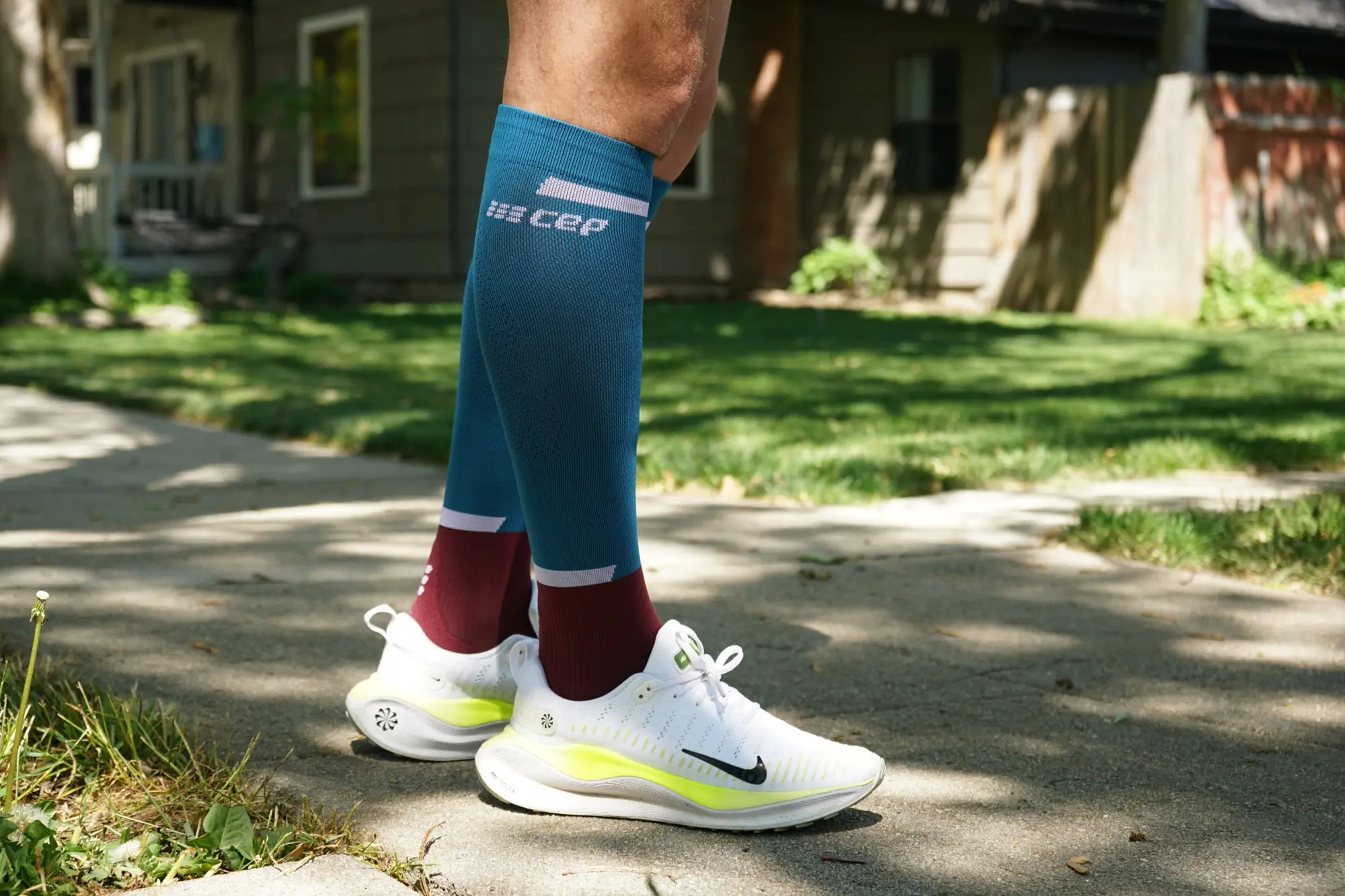
How We Tested the Best Compression Socks
Our Expert Tester
Our lead tester, Will Porter, has run various races in the past few years, ranging from a trail half marathon at Joshua Tree to the 2023 Boston Marathon. Currently, he’s balancing ultramarathon training with riding his bike just enough to go on a couple of bikepacking trips in the coming months.
Most of his runs are done on the trails that zig-zag throughout the Boise foothills, with road runs, track workouts, and cross-country mountain bike rides mixed in. While he was testing these socks, he was also putting in serious miles with half a dozen running insoles and various running shoes to the test. He’s always been a big fan of compression — he bought his first pair of compression socks well over a decade ago and hasn’t turned back.
Will has been on the gear beat for four years now, testing and writing about everything from gravel bikes to bikepacking tents to GPS watches. He’s probably gotten hands-on with over 50 pairs of running shoes and is always on the hunt for the latest and greatest tech in the business.
Our Testing Process
In order to get comprehensive results and develop detailed insights, the GearJunkie team tested a wide variety of compression socks. We tested them primarily through road and trail running and subsequent recovery but also by cycling, hiking, and in everyday situations. And don’t worry — we put them all through the washing machine, not only for hygiene reasons but also to see how they hold up after a hot wash and tumble dry.
When considering which styles and designs work best, lead tester Will Porter thinks the actual compression level of the sock is the most important factor, regardless of their intended use. He has a past littered with knee and ankle problems, so finding a pair that provides adequate support and optimal blood flow is the name of the game.
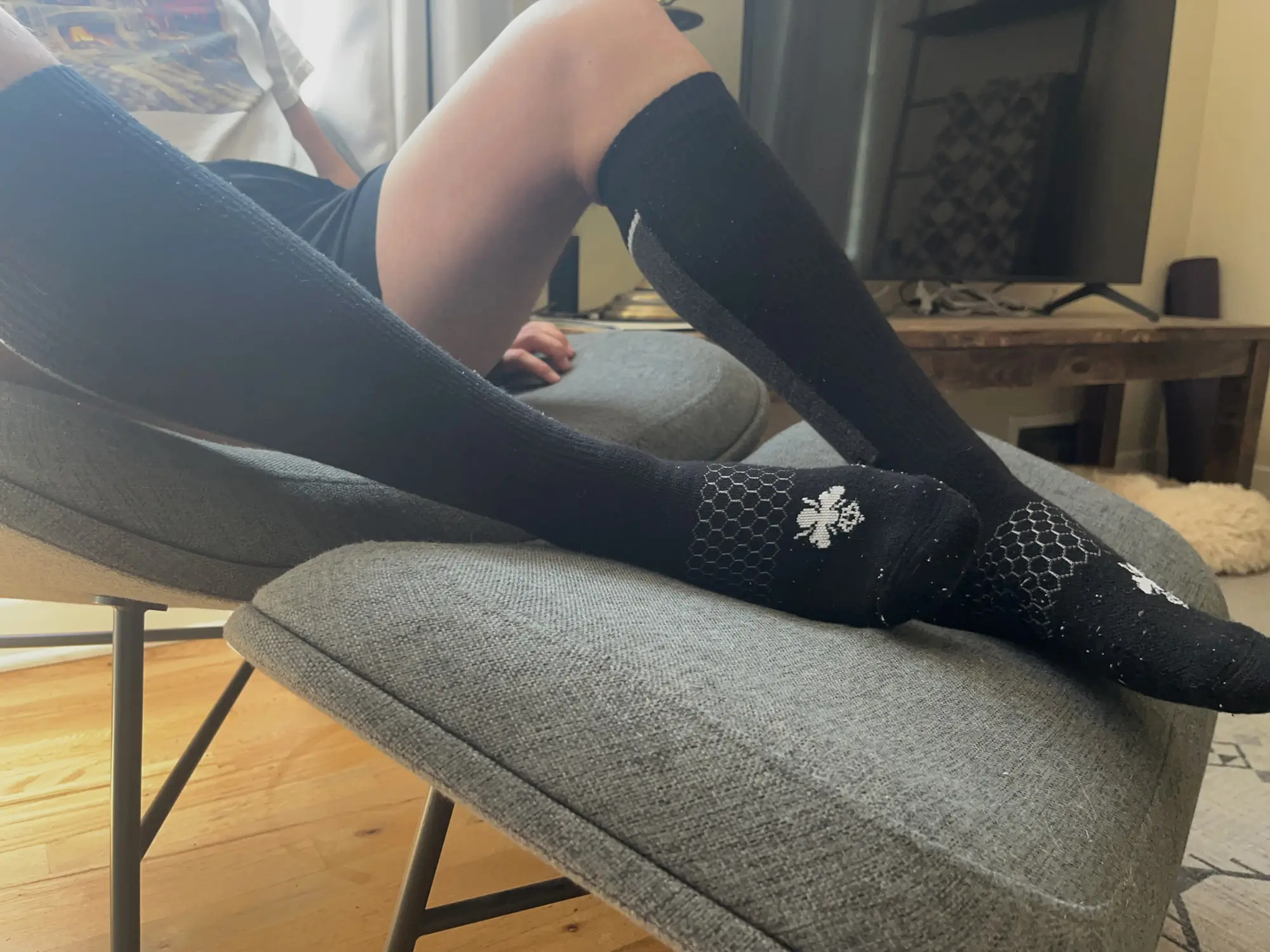



Buyer’s Guide: How To Choose the Best Compression Socks
Finding the right compression socks for your needs isn’t easy. There are various different styles and design features that serve different needs. Also, the sizing needs to be dialed in to ensure you get the desired amount of compression.
While these socks are a great recovery tool, you may want to add more weapons to your recovery arsenal. If you want to check out some other recovery gear, take a look at our list of the best massage guns.
Compression Level
Compression is measured in mmHg (millimeters of mercury), a unit not often used outside of medical circles. Compression socks come in a range of mmHgs, from medical-grade socks for those with chronic illnesses to less intense socks geared toward athletes looking for enhanced recovery.
Not all of the socks on our list are categorized this way, but knowing basic ranges and compression levels can help you find the right option for you. For example, 10-20 mmHg, as you’ll find in the Feetures Graduated Compression Light Cushion Knee High, is considered light compression, while anything over 20 mmHg, like the 2XU Compression Socks for Recovery, is considered moderate to high compression.
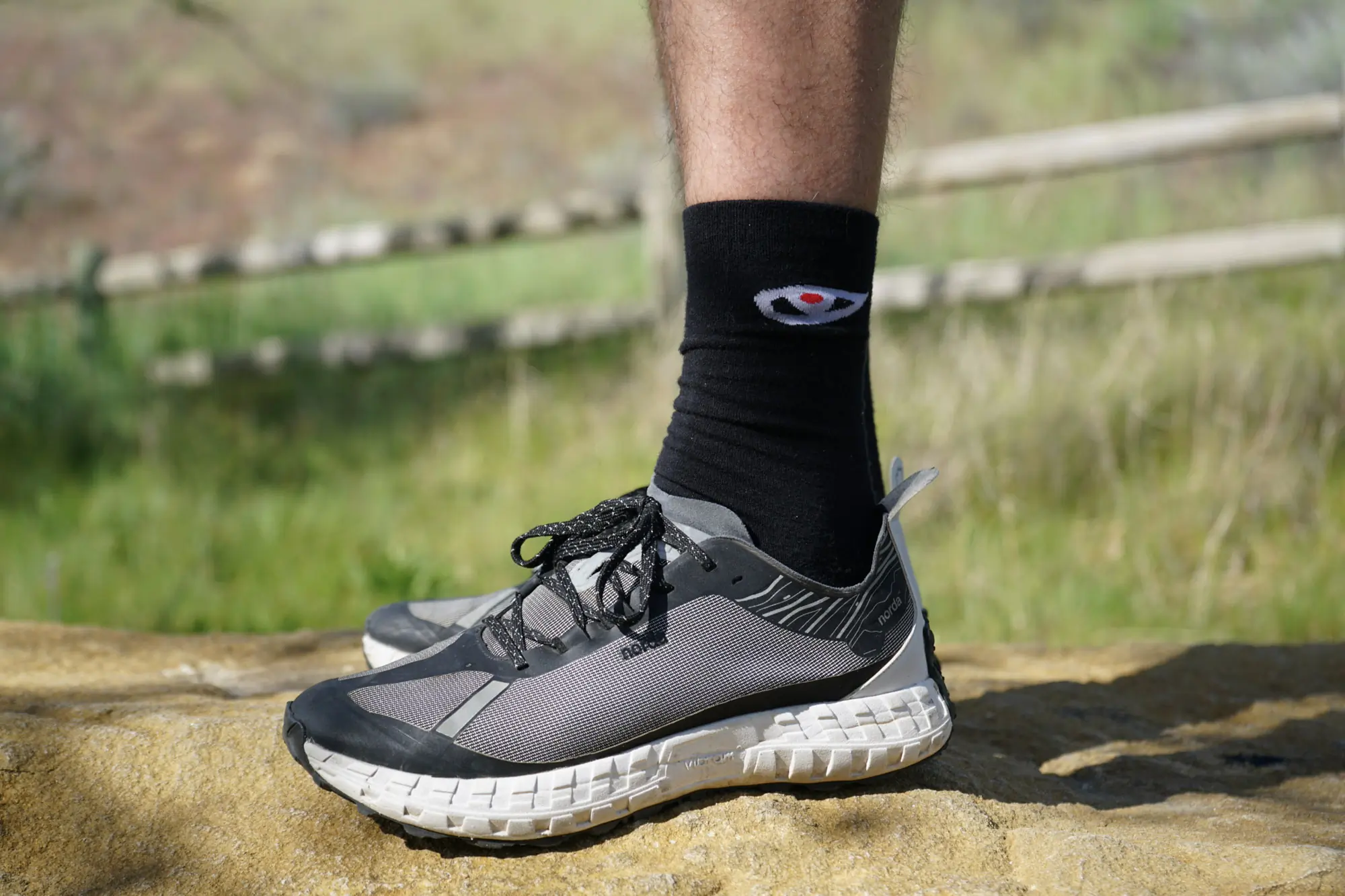



Size Options
Some of these socks are sized like any old regular sock — small, medium, large, and so on. These sizes generally provide a range of shoe sizes they’ll fit, so be sure to check the size chart before buying. Other brands make more specific sizes, allowing you to dial in the perfect fit for your foot size. Buying compression socks that are too big for you can negate some of the benefits, so we recommend paying close attention to the size you’re buying.
Best Use
We tested socks designed for athletes, not for medical purposes, so we recommend consulting a doctor if you are interested in buying socks to help curb the symptoms of a chronic condition. That said, we tested a huge range of socks, most of which fall within the 10-30 mmHg range. Most brands, like CEP with the CEP The Run Compression Tall Socks 4.0, will highlight what they made their socks for in the product description — be it running and other physical activity, travel, or recovery. Technically, any compression can be used in a few different situations, so the decision on how you want to use the socks is up to you. The biggest difference between intended uses will be materials, cushioning, and performance, i.e. moisture-wicking, cotton vs. poly, thick or thin.
Why wear compression socks?
Improved Blood Circulation
Just about every benefit attributed to compression socks stems from their ability to improve blood circulation in your legs. The gentle compression keeps your lymphatic system working, even while staying off your feet after a hard workout. This means that your leg muscles can more efficiently transport blood back to your heart, where it is replenished with oxygen and nutrients and then sent back to clear out lactic acid and other waste that results from a hard physical effort.
Reduced Swelling
Compression helps your body move blood from your legs up to your heart and back again, an essential mechanism for reducing swelling and inflammation after a workout. Keeping your blood pumping results in more oxygenated blood reaching your muscles and more lactic acid and waste being cycled out, helping limit your body’s inflammatory response.
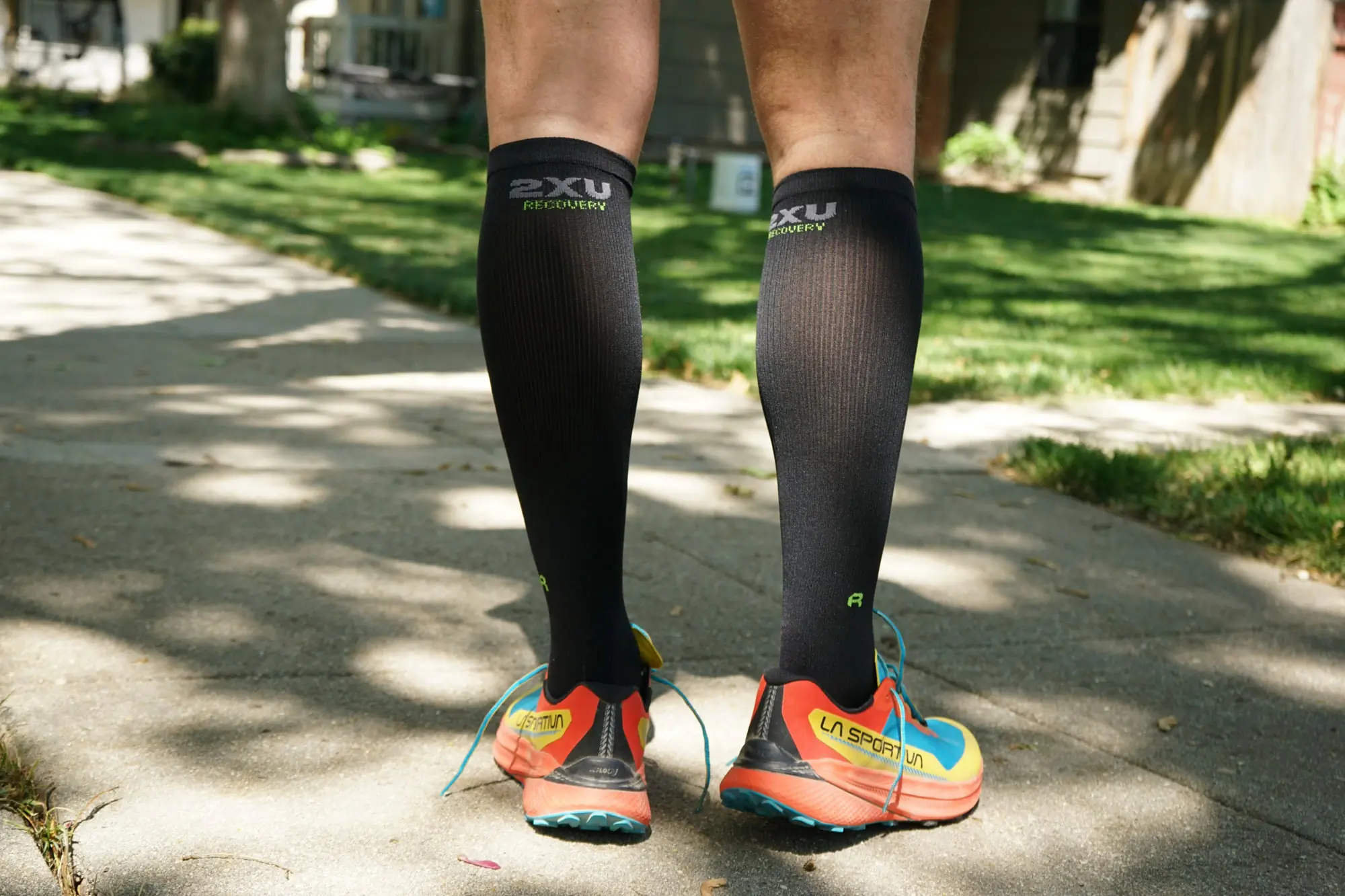



Prevent Blood Clots
Another trickle-down benefit. Since your body moves blood more quickly and efficiently, compression can help prevent deep vein thrombosis. This is why you see these socks worn on airplanes and other places where folks are seated for long periods of time with lower-than-usual blood circulation.
Price & Value
Budget
If you’re compression-curious, it’s not hard to find a pair for $15-25. At this price range, you won’t find the compression strength that you might find at other price ranges, and budget compression socks may not be as durable, but there are still some excellent starter options in this price range. Our favorite budget socks, the Swiftwick Aspire Fours ($19), sit at under $20, but they offer firm, supportive compression in the foot and ankle, and we’ve been impressed with their durability.
Mid-Tier
In the $25-40 range, you can expect stronger compression with tighter weaves and more longevity. The Feetures Graduated Compression Light Cushion Knee High ($40) offers a solid, but not too tight, squeeze, and the high-density cushioning delivers padding without feeling bulky. The Bombas Performance Compression Socks ($36) offer a strong, medical-grade compression that we loved for recovery days.
Premium
Compression socks that venture into the $50+ range are generally more sport-specific, offering enough compression to provide support without hindering performance. The CEP The Run Compression Tall Socks 4.0 ($60) are a great example of this, with just enough compression to provide support but not so much that they’d interfere with circulation during a run. These socks generally have a more specific sizing (calf measurements may be required), so be prepared to do some measurements before you buy.
Frequently Asked Questions
Compression socks use graduated compression to keep blood pumping toward the heart, enhancing your body’s ability to recover and move freshly oxygenated blood through the body.
Medically, compression is measured in mmHg (millimeters of mercury). Not all compression socks designed for athletes are measured this way, though. Some simply will use the term compression to differentiate between standard athletic socks.
While most socks we tested only come in one compression level, there are four classes that you might encounter while searching for the best socks for you. Read here for a detailed explanation by the German company Medi, owner of CEP and other brands.
| Compression class | Pressure in mmHg |
|---|---|
I (very low compression) | 18–21 |
II (low compression) | 23–32 |
III (moderate compression) | 34–46 |
IV (high compression) | > 49 |
The compression from these socks can improve your body’s recovery time, ease the pain that comes from a hard workout, and keep your body fresh for the workouts to come.
